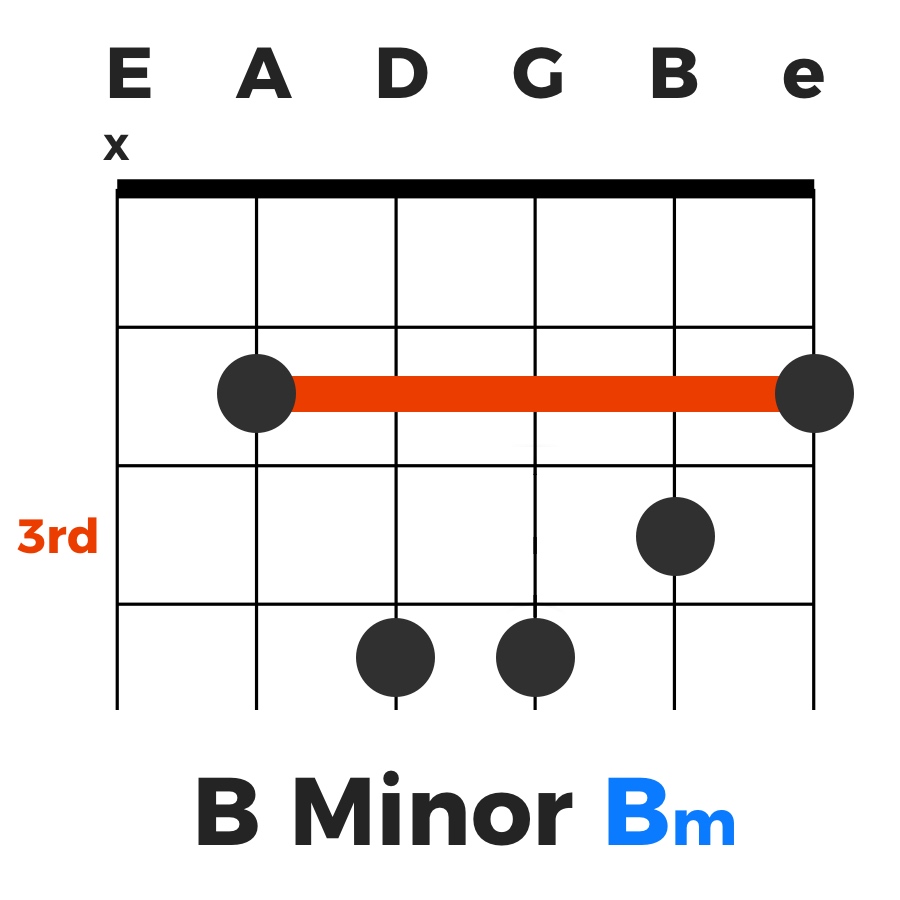In a nutshell (see detailed below)
We have looked at open chords and seen how they work, but we have only hit around 80% of the most common chords. The last 20% come from Barre Chords. A Barre chord is similar to an open chord, except you use one of your fingers as the nut on the guitar. Below you can see the barre chord shapes.
Notice how they look like the chords E major/E minor and A major/A minor? This is because we are taking an E/Em chord and moving it up a few more frets. We use the E/Em shape whenever the root note is on the E string. We use the A/Am shape when the root note is on the A string. (The root note is the lowest note being played in the barre chord position). If we know our notes on the fretboard then we can change our root note to wherever we like, play that shape and ba-da-bing ba-da-boom we can play any barre chord on the neck!
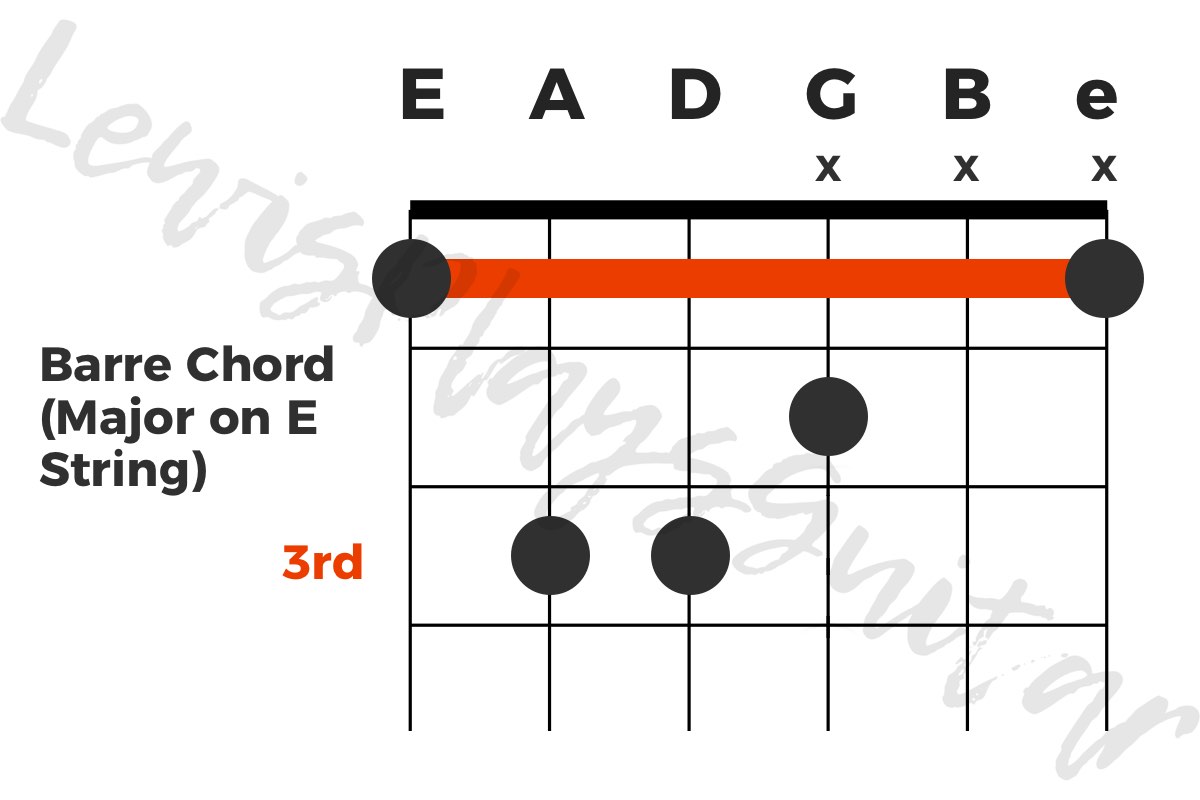
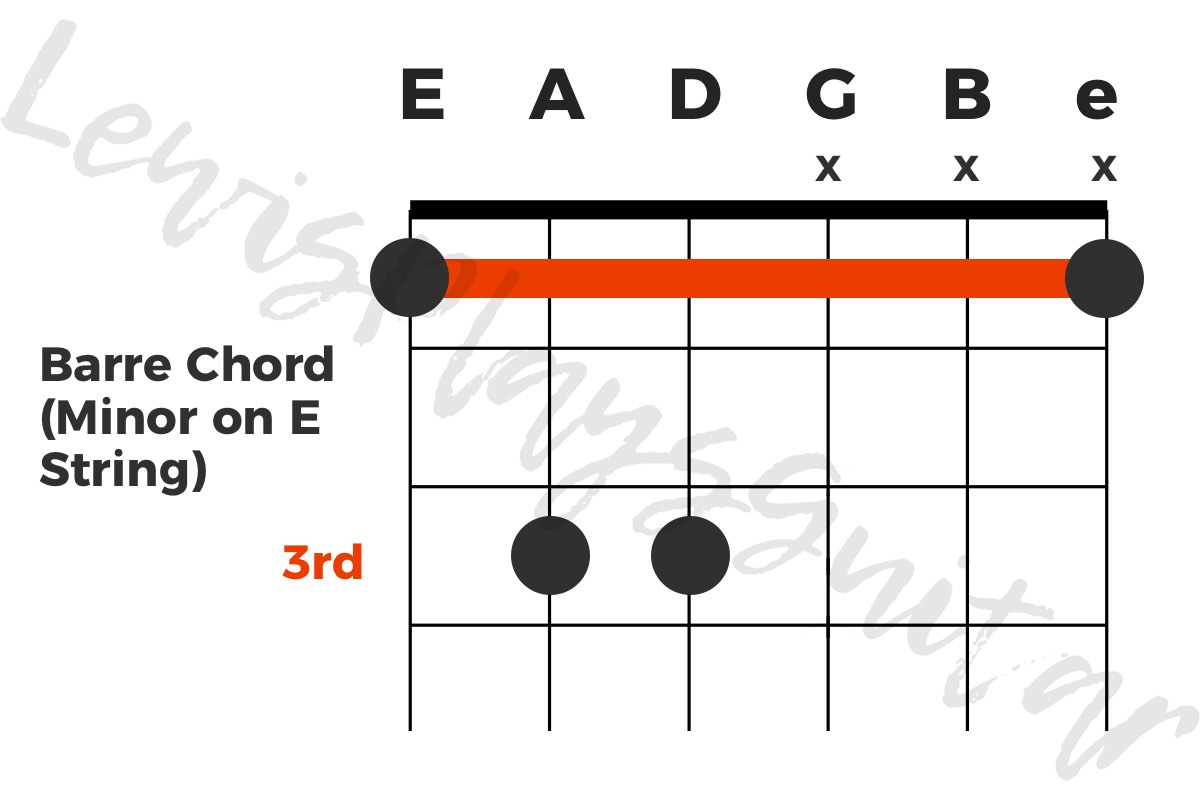
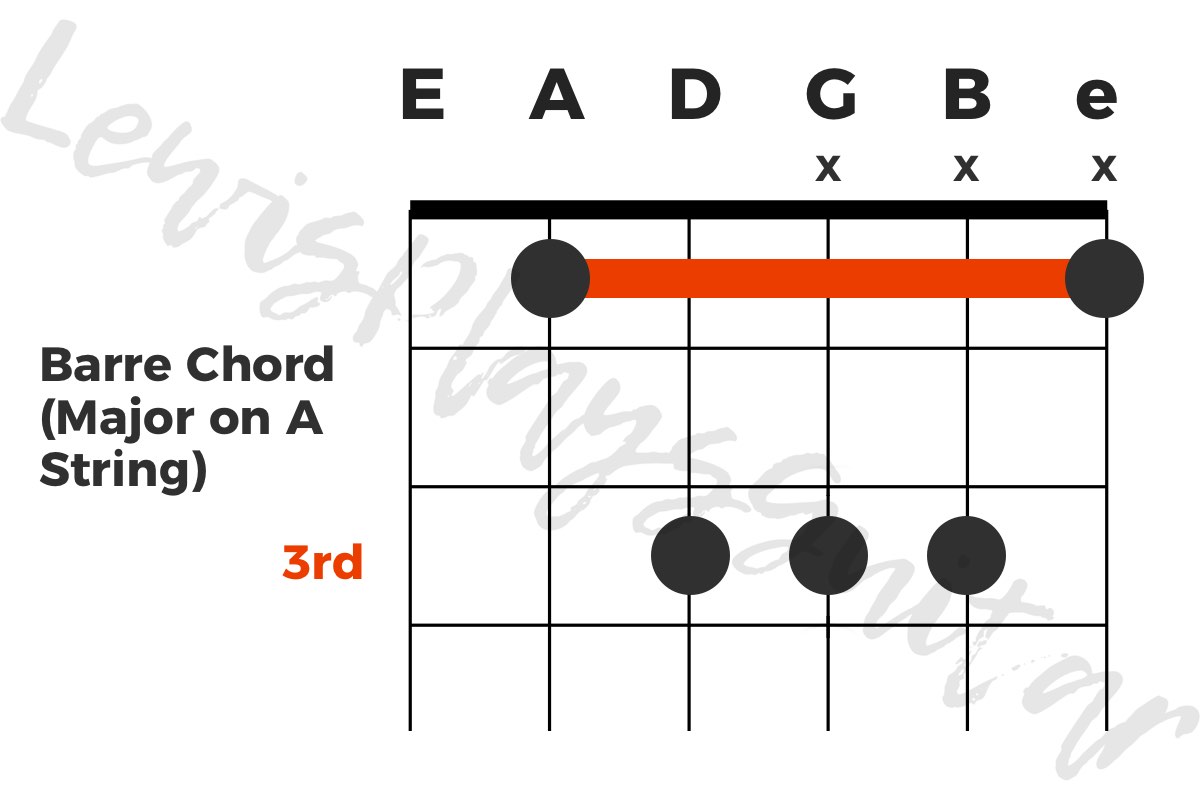
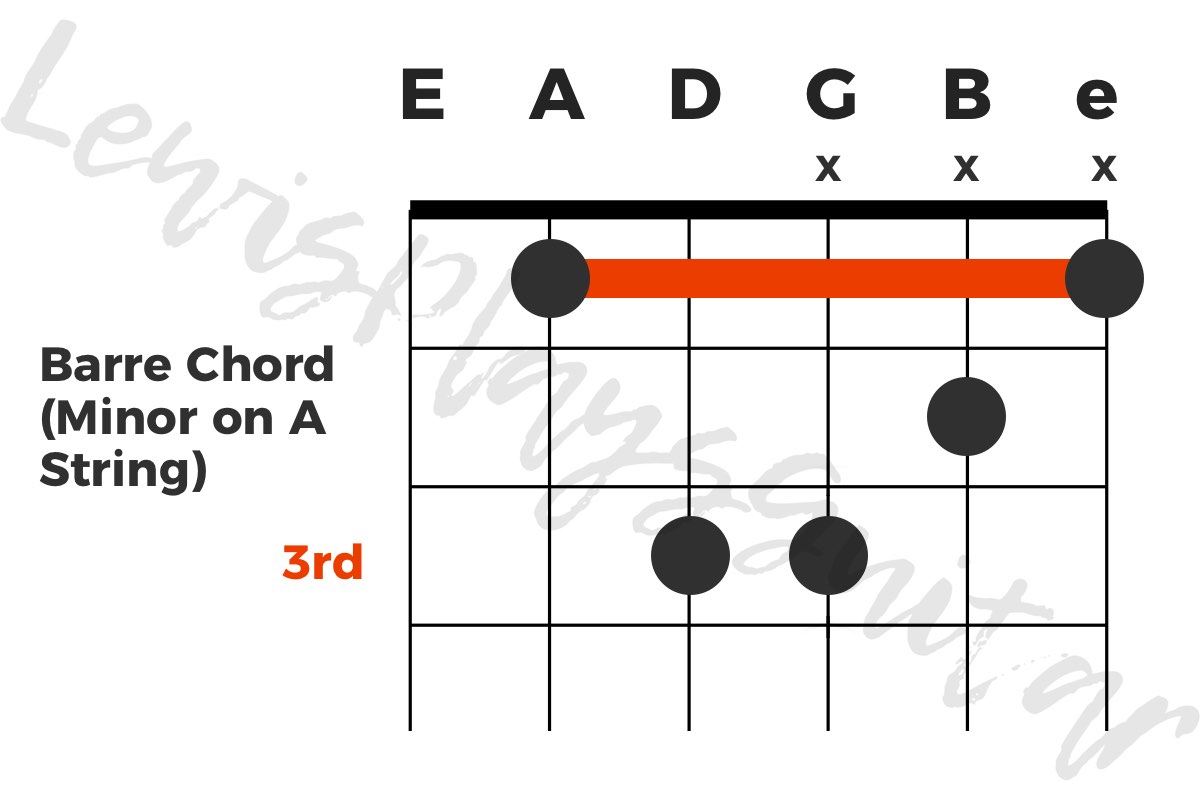
In more detail
So, the barre chord may look very intimidating at first. There are some cons to these shapes at first, but they are outweighed by the pros that shine when you master the barre chords. Lets get the cons out of the way first.
Cons:
- It does take more finger strength than other chords. This is because your first finger frets all the strings on a certain fret.
- It forces you to use your pinky. In the chords we have looked at, there has been very little activity with the pinky finger. When you start to use your pinky, it will be difficult to adjust, but in the long run this will benefit you when playing solos and with your overall dexterity and finger strength.
- It takes up all of your fingers. This is one of the long-term drawbacks to this shape, as there is no freedom to add notes unless you take some out of it’s structure or replace some of the notes that are repeated twice (as octaves).
- You will need to be familiar with the notes on the fret board and where they are positioned. This is important as you need to know where the bass note is to create that chord. It will also help in the future when you want to change a chord’s quality as you will know the structure of the chord and which note to change to make it the chord you need.
- That’s it really! The hardest part is learning the shape and adjusting to it.
Pros:
- You can play every major and minor triad in any key. As the shapes works over 2 of the thickest strings, meaning you can choose any ‘Root’ note and play the major/minor variant of it.
- It’s flexible! As all the shapes are similar, you can keep a shape and change to another fairly easily and get a completely different chord. This comes in very handy when you need to be quick changing from one chord to another.
- It will improve your strength as a guitarist and will help you with more strenuous tasks in the future.
It may seem difficult to start with and it’s okay to get annoyed with the shapes, but don’t worry, it will take time! I would advise spending 15 minutes a day for a week, and you will see the improvement. Your fingers will need time to recover after a ‘workout’ and your muscle memory will need to build up to these shapes but trust me, it pays off in the long run.
The way Barre chords work all derives from the note on the lowest string. Let’s take the Major E shape barre chord on the E string. In the example, I am playing an C Minor Chord as a Barre. If we look at the fretboard notes, you will notice the lowest note is the ‘Root’ note. Next, we have the Perfect 5th interval. It then goes to the octave, to the minor 3rd interval, and to the 5th, and finally the Root. There is a visual aid attached to show this clearer.
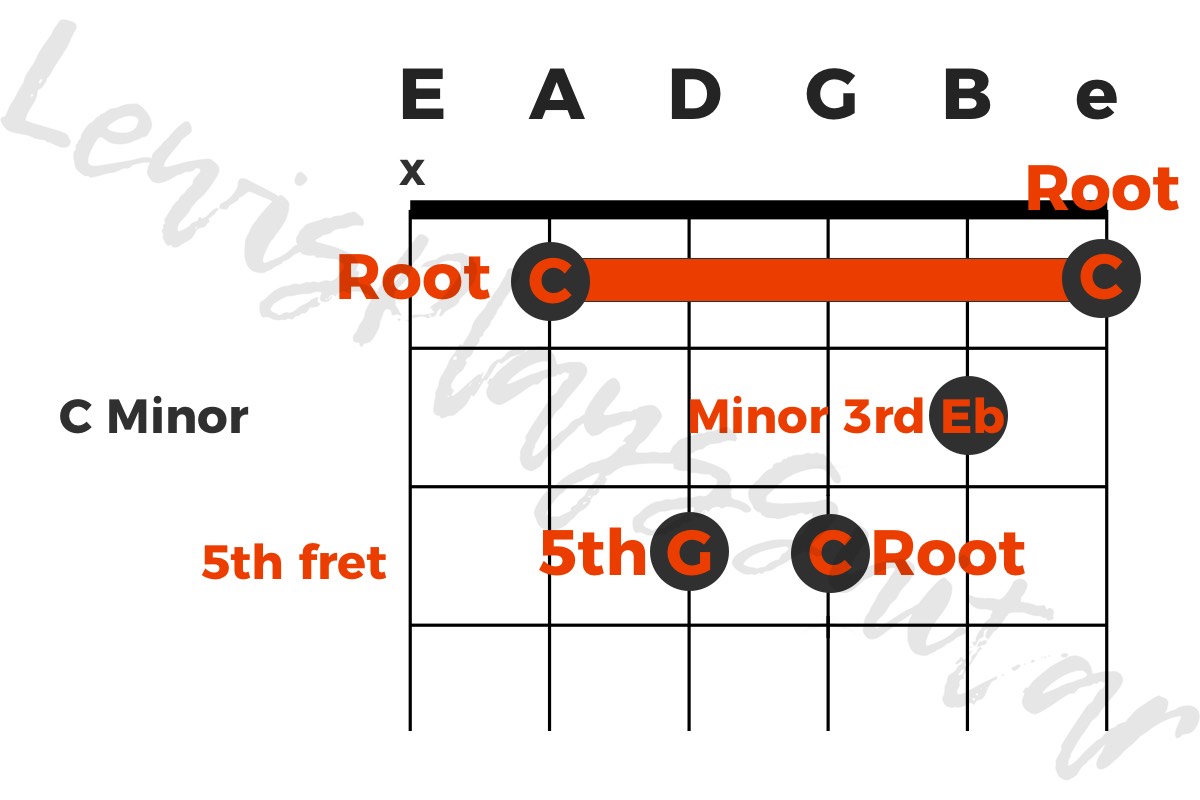
So why are we using these intervals? Well a Minor chords the intervallic pattern of Root - Minor 3rd - Perfect 5th. We have all of these intervals in this chord, but because we have more than 3 strings, we can double up the most important ones: The root and the perfect 5th.
Another way to think about Barre chords is by imagining the first finger that is fretting all 6 strings to be the ‘Nut’ on a guitar. Under the nut, you will notice two main shapes.
The shapes that are used are the A major/A minor, or E Major/E minor shapes. A handy way to remember them is to think about which string the root note is on and use that shape for that string!
To complete your chord library, we need to learn the chords B, B minor, F, and F Minor. All of these chords are Barre chords. Using the notes of the fretboard, see if you can work out the chords. Once you think you have them, check if they are right below!


